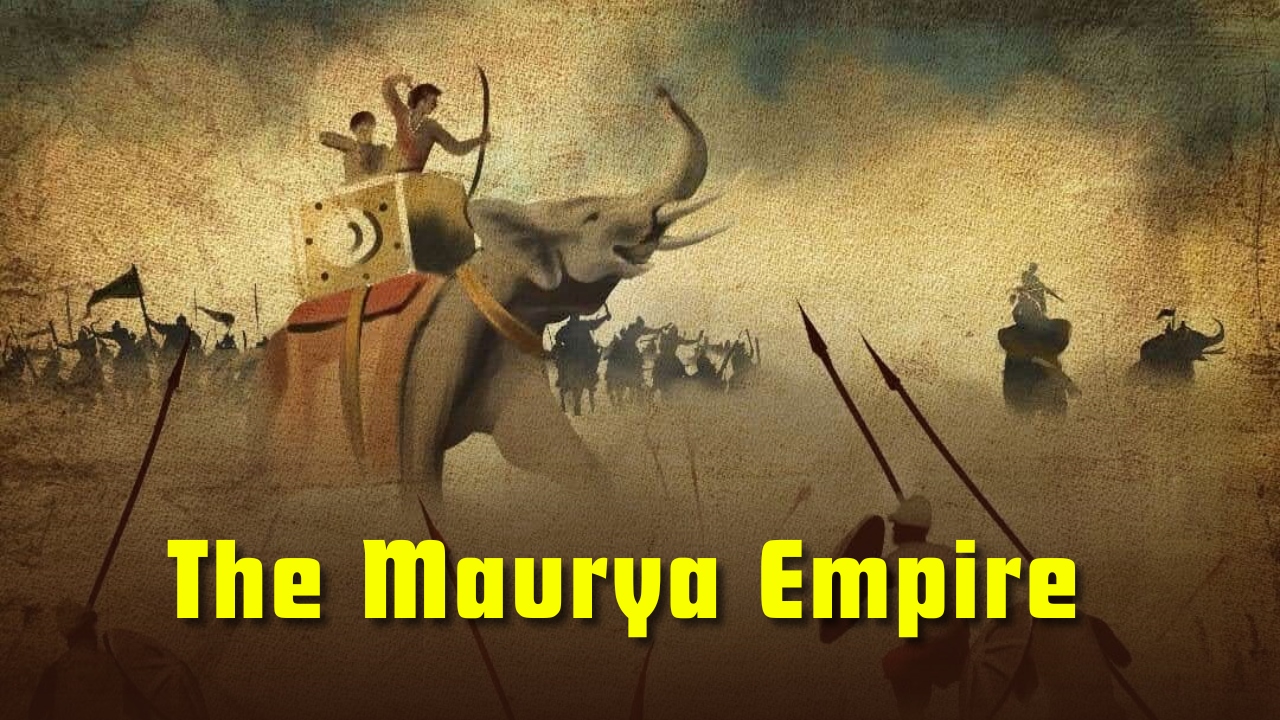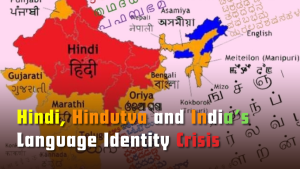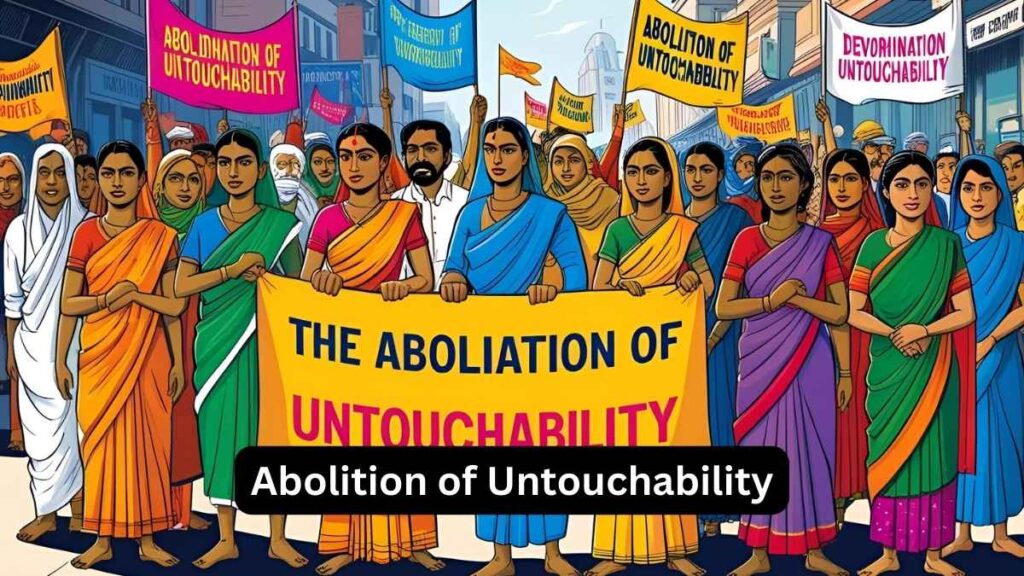The Maurya Empire UPSC – Timeline, Key Rulers & Administration
The Maurya Empire was the first major attempt to bring the Indian subcontinent under a unified political authority and established the basis for centralised rule. Stretching across vast territories of the Indian subcontinent, the Mauryan rule left behind a rich legacy of administration, art, and ethical governance. For UPSC aspirants, studying the Maurya Empire is critical, not only due to its political history but also because of its impact on Indian culture, economy, and religious thought.

Sources of Mauryan History
Mauryan history is reconstructed using a mix of textual records, inscriptions, and archaeological findings. These provide a detailed and reliable narrative for this significant phase in Indian history.
Literary Sources
- Kautilya’s Arthashastra: Written in Sanskrit by Chanakya (Kautilya or Vishnugupta), this treatise on statecraft, administration, law, and diplomacy offers insights into the governance of the Mauryan Empire.
- Mudrarakshasa by Vishakhadatta: A political drama written during the Gupta period, it narrates the overthrow of the Nandas by Chandragupta Maurya with Kautilya’s help.
- Megasthenes’ Indica: Written by the Greek ambassador at Chandragupta’s court, it describes the administration, society, and military of the Mauryan capital, Pataliputra.
- Buddhist and Jain Literature: Jatakas, Dipavamsa, and Mahavamsa elaborate on Asoka’s conversion to Buddhism and his missionary zeal.
- Puranas: Though primarily religious, they contain genealogies and dynastic lists useful for chronological reconstruction.
Epigraphical Sources
- Asokan Edicts: Deciphered by James Prinsep in 1837, these inscriptions in Prakrit, Pali, Brahmi, and Kharosthi scripts reveal Asoka’s policies and governance. The Kalinga war is mentioned in the 13th Rock Edict, whereas Pillar Edict VII outlines various measures linked to Asoka’s Dhamma.
- These edicts are found across India and act as primary sources for reconstructing Asoka’s rule and ideology.
Political History of the Mauryas
Chandragupta Maurya (322–298 BCE)
Chandragupta Maurya laid the foundation of the Mauryan Empire by overthrowing the last Nanda ruler, Dhanananda, with the strategic support of Kautilya. He established his capital at Pataliputra and rapidly expanded the empire across the Gangetic plains and northwestern regions.
- In 305 BCE, he defeated Seleucus Nikator, a general of Alexander the Great. The resulting treaty ceded Aria, Arachosia, and Gedrosia to the Mauryan Empire. Seleucus also gave his daughter in marriage and received 500 war elephants in return.
- After adopting Jainism, Chandragupta renounced the throne and moved to Sravana Belgola in present-day Karnataka, where he undertook fasted to death (Sallekhana) under the spiritual guidance of Bhadrabahu.
Bindusara (298–273 BCE)
- Bindusara, referred to by the Greeks as Amitraghata or ‘slayer of enemies,’ is credited with extending Mauryan control into the Deccan region, possibly reaching as far as Mysore.
- He maintained diplomatic relations with foreign powers. The Greek ambassador Deimachus visited his court.
- He was a patron of the Ajivika sect and designated Asoka to govern Ujjain.
Asoka the Great (273–232 BCE)
Asoka’s early reign was marked by a violent conflict—the Kalinga War (261 BCE). The heavy casualties and suffering left a deep impact on Asoka, leading him to embrace Buddhism and renounce violence.
- He became a lay disciple (Upasaka) initially and later a Bikshu (monk).
- His Dhamma was not confined to Buddhism but was a moral code of conduct promoting ethical living, tolerance, and compassion.
- He appointed Dharma Mahamatras to spread Dhamma and undertook Dharmayatras to maintain contact with his subjects.
- Asoka’s missionary zeal led to the spread of Buddhism to Sri Lanka, Central Asia, and Southeast Asia.
Administration of the Mauryan Empire
Mauryan governance featured a centralised and well-organised bureaucracy, influenced by the Arthashastra and corroborated by both Megasthenes and Asoka’s inscriptions.
Central Administration
- At the top of the administrative structure stood the monarch, assisted by a council of ministers known as the Mantriparishad.
- Key departments included revenue, army, espionage, public works, and foreign affairs.
- Officers were appointed to manage specific tasks—e.g., Samaharta (revenue collector) and Sannidhata (treasurer).
Provincial Administration
- The empire was divided into provinces, each headed by a Kumara (royal prince) or governor.
- Major provinces included Tosali (Kalinga), Ujjain (western India), and Suvarnagiri (southern Deccan).
District and Village Administration
- Provinces were subdivided into districts (Ahara) and villages (grama).
- Gopa and Sthanika were revenue and record-keeping officers at local levels.
- Village elders held significant influence in local governance.
Military Organisation
- A standing army of 6,00,000 infantry, 30,000 cavalry, and 9,000 elephants was maintained.
- Megasthenes notes the existence of a military board comprising six committees, each in charge of different military divisions.
Espionage System
- A vast spy network reported to the king on administrative efficiency and public sentiment.
- Spies (Gudhapurusha) operated in disguise, ensuring internal vigilance.
Asoka’s Dhamma and Its Principles
While inspired by Buddhist moral values, Asoka’s Dhamma embraced a broad and non-sectarian approach.
Key Features of Dhamma:
- It honours one’s parents, elders, and teachers, along with showing kindness to all living beings.
- Ahimsa (non-violence) and tolerance of all religious sects.
- Avoidance of meaningless rituals and animal sacrifices.
- Promotion of social welfare through humane governance.
- Promotion of ethical conduct over material ambition.
- Moral conquest (Dharmavijaya) preferred over territorial conquest.
Art and Architecture Under the Mauryas
- Stupas, Pillars, and Rock Edicts stand as enduring symbols of Mauryan artistic excellence.
- Asokan Pillars, especially the Lion Capital at Sarnath, reflect Persian and indigenous styles.
- The Barabar caves near Gaya, carved for the Ajivikas, are among the earliest rock-cut architecture in India.
- Stupas at Sanchi and Bodh Gaya received royal patronage.
Decline of the Mauryan Empire
Following Asoka’s death, the empire witnessed rapid decline due to several factors:
- Weak successors who could not match Asoka’s administrative and political skills.
- Over-centralisation of power made governance of vast territories difficult.
- Bureaucratic corruption and loss of control in provinces.
- Economic strain due to Asoka’s emphasis on welfare without matching revenue reforms.
- The final blow came in 185 BCE when Pushyamitra Shunga, the commander-in-chief, assassinated Brihadratha, the last Mauryan ruler, and founded the Shunga dynasty.
Legacy of the Mauryan Empire
- It was the earliest empire to bring most of the Indian subcontinent under a unified political structure.
- The Mauryas established a formal bureaucratic system and codified governance through inscribed edicts.
- Buddhism was propagated throughout Asia during their rule, leaving a lasting cultural influence beyond Indian borders.
- They introduced the concept of moral rule, with Asoka often celebrated as a model of righteous kingship.
- Their achievements laid the foundation for subsequent empires like the Guptas and also influenced modern Indian polity.

Conclusion
The Maurya Empire, particularly under Chandragupta Maurya and Asoka, signifies a golden chapter in Indian history. From robust administration and international diplomacy to ethical governance and monumental architecture, the Mauryas transformed the political and cultural landscape of ancient India. For UPSC aspirants, the Mauryan period is not only a cornerstone in ancient Indian history but also offers deep insights into statecraft, diplomacy, religious tolerance, and governance ethics.
Subscribe to our Youtube Channel for more Valuable Content – TheStudyias
Download the App to Subscribe to our Courses – Thestudyias
The Source’s Authority and Ownership of the Article is Claimed By THE STUDY IAS BY MANIKANT SINGH





